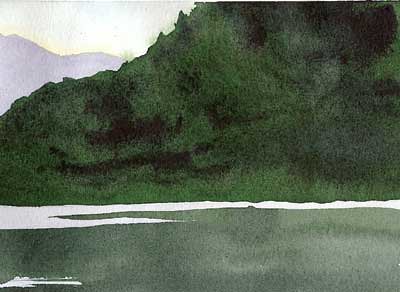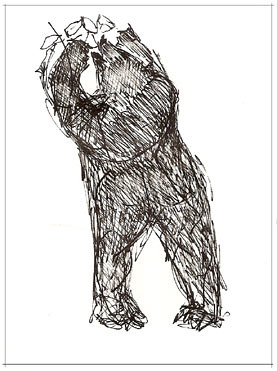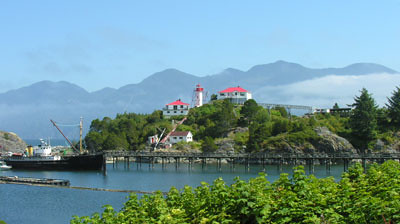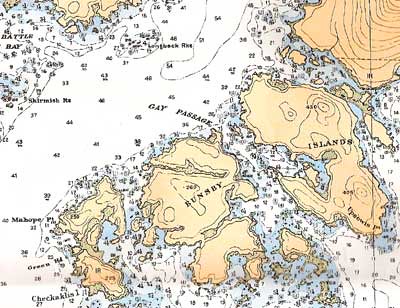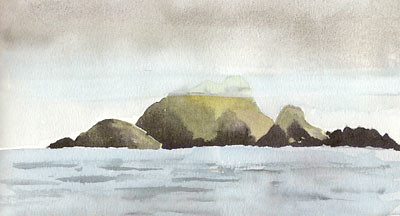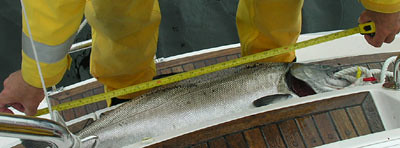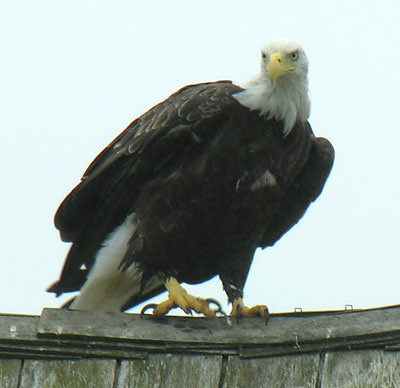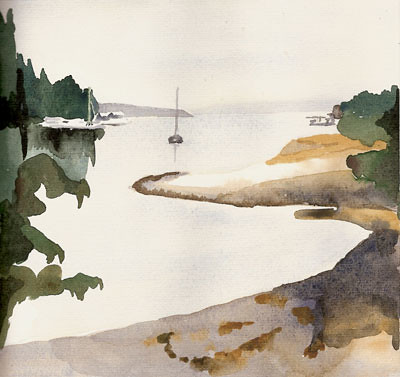Reprovisioning

Ucluelet, the port town at the edge of Barkley Sound, offers us the first opportunity in three weeks to replenish our galley. We are delighted to find fresh vegetables and fruit; the things we take for granted in the city – greens, herbs, seasonal fruit – all seems exotic now. After two days in port, our baskets and refrigerator box are overflowing with fresh produce.
And we don’t stop with just one grocery store, but visit each one and find a cross section of life out here on the west coast. There is the big store, the Coop, where everyone shops for food and hardware. Waiting in the checkout line here is a chance to catch up on local concerns: where the fish are biting, when the next commercial fishery will open, the weather, how the tourist season is progressing. Across the main street is the natural food store. We can’t get hardly a word from the proprietress. But when she isn’t busy she sits on the front stoop and talks to the pigeons. A good cross section of the Tofino-Ucluelet region – a bit of new age applied to hard-working fishing towns.

